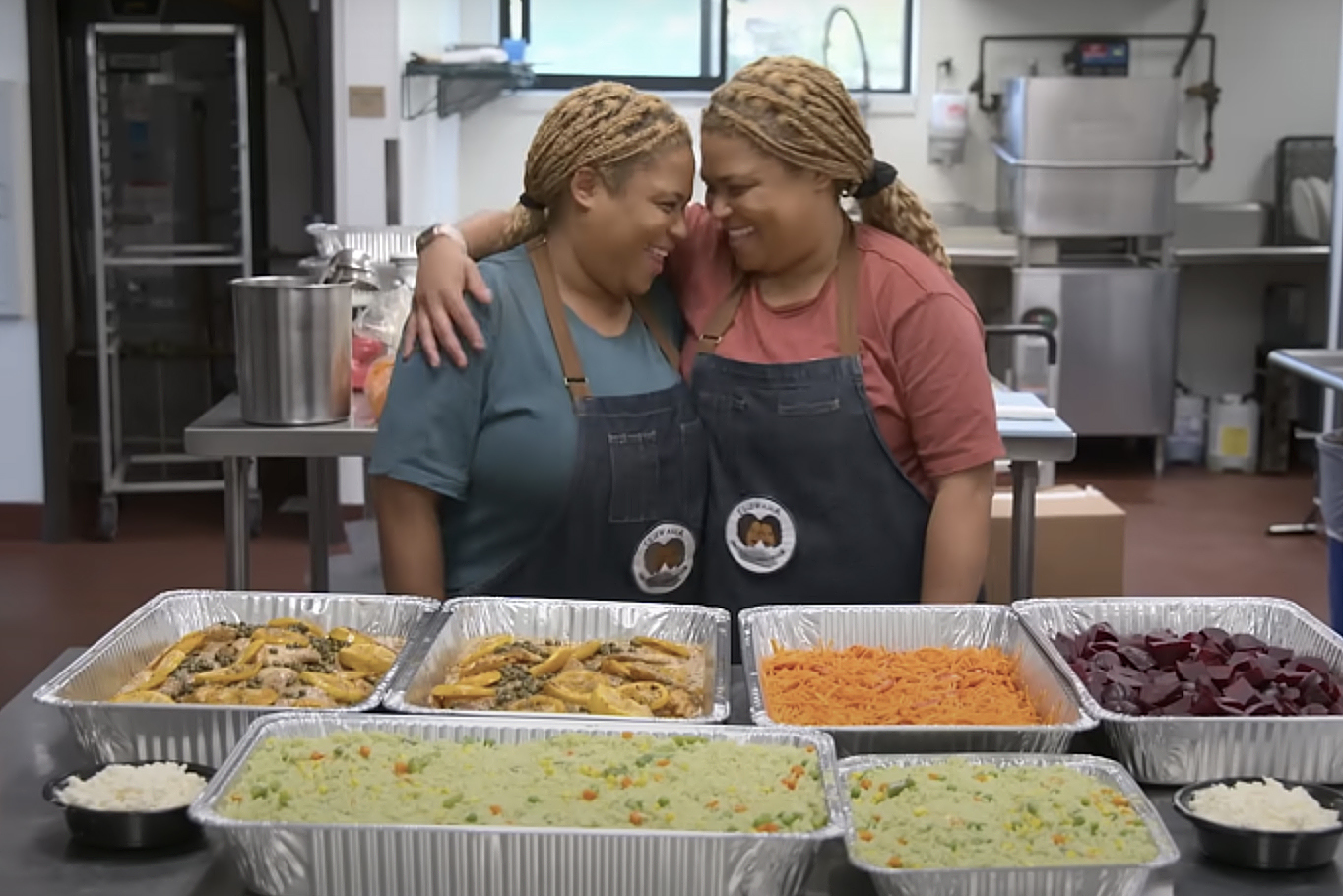As if identical twins didn’t draw enough stares, San Francisco chefs Pam and Wendy Drew have now had to get accustomed to their newfound status as local celebrities. A limited Netflix series chronicling their nutritionist-guided weight loss, You Are What You Eat: A Twin Experiment, bounded to the No. 3 most-streamed spot in the country over the weekend.
The South Africa-born chefs have been recognized at the grocery store and identified by (previously unknown) neighbors on their street. They’ve even had people seek them out after seeing their Sunset District intersection—Ninth Avenue and Noriega Street, to be exact—included in the show.
The four-episode series, which follows four sets of identical twins as they adhere to omnivorous versus vegan diets, is decidedly Bay Area. Three of the four sets of twins featured live in the region. There are shots of the Golden Gate Bridge and Alamo Square, scenes at Berkeley’s Alternative Meats Lab and Miyoko’s Creamery in Petaluma.
Even the show’s concept has local roots, coming from an unprecedented study conducted by a Stanford professor in which 22 sets of identical twins divvy up, with one twin following a vegan diet, the other an omnivorous one, with blood samples and weight measurements taken at four and eight weeks.
You Are What You Eat: A Twin Experiment began filming in the summer of 2022 and wrapped in May 2023. The twins were not new to reality TV, as they had previously appeared on Chopped and The Great Food Truck Race, both of which they remember as negative experiences. Still, this latest series impacts how the Drews eat.
“We’re incorporating a lot more vegetables and eating less meat,” Wendy Drew said.
That’s exactly what Stanford nutrition scientist Christopher Gardner, whose study backs the science in the show, was hoping for—and the show’s success has allowed him to disseminate his research in a way not possible before.
“I’ve been doing this research for 30 years and not getting at changing behaviors—but this is,” he said.
Gardner said his inbox is full with people writing him about incorporating more plants into their diet and that 130 news outlets covered the full results of his study when it was released on Nov. 30 in the Journal of the American Medical Association, a dream scenario for an academic. It even made it worthwhile to see some of the series’ more cringe-inducing components he had no idea would be included—like pornography.
“These guys took it to the next level and added sex, vegan cheese and [New York’s] Eleven Madison Park restaurant going vegan,” he said. “My initial reaction to that is horror. My next reaction to that is, ‘Why is it No. 3 on Netflix?’”
Pam, the twin assigned to eight weeks of veganism, didn’t fully stick to the diet that eschews animal products—a feat that would be difficult given the two run a catering company, Amawele’s South African Kitchen, which includes meat dishes as a key component. Yet the sisters are no strangers to alternative diets, as their brick-and-mortar restaurant (since closed) was likely San Francisco’s first paleo kitchen when it opened in 2013.
But the challenge of transitioning to an exclusively vegetable-and-bean diet was extraordinarily challenging for Pam—an experience not included in the show. The two said they were surprised by the final product of the series, which had a less twin-focused emphasis than they had imagined.
“There’s a big difference between the study itself and the series,” Wendy Drew said.
While You Are What You Eat clearly advocates an all-plant-based diet—uncovering the terrors of fish farming struck a chord with many audience members, the Drews said—but the study itself supports eating simply more vegetables and whole foods and less meat.
After reading reviews, Pam said she understood people wanted more of what happened to participants behind the scenes. “They wanted the dramatics,” she said.
And dramatics there were. Pam remembers being in tears over the fact she couldn’t taste-test the food she was cooking, since she was assigned the vegan diet for the study.
The real breaking point came for her when she was at a picnic catered by her company where everyone was eating mouthwatering—and aromatic—brisket that she had cooked but wasn’t allowed to consume. “That weekend, I just got drunk,” she said.
Another difficult moment—with more levity—was when the twins had to watch porn in order to monitor the impact of their diets on their libido. With the option to select whatever turned them on, the twins chose hentai cartoons over people. “We are anime freaks,” Pam Drew said.
The two have kept busy since their Netflix appearance, developing a rooibos-based alcohol called Red Pearl Spirits that’s available at area liquor stores and bars. Last year, their Rooibos Vodka Refresher Tea Cocktail won Double Gold and Silver at the San Francisco World Spirits Competition.
All in all, You Are What You Eat: A Twin Experiment has been a stunning success for them, especially as they were initially wary of working with big-name reality television again. “We came into the Netflix show a little guarded, because we had been treated so horribly,” Pam Drew said, referring to the sisters’ negative experiences on the Food Network shows Chopped and The Great Food Truck Race.
While the teams from those shows acted as if the twins should feel lucky they were selected, the approach on the Netflix show was the inverse. “We were treated with such respect,” Wendy Drew said. “And they made you feel like a star.”
